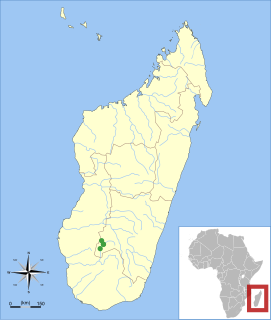
Vespertilionidae is a family of microbats, of the order Chiroptera, flying, insect-eating mammals variously described as the common, vesper, or simple nosed bats. The vespertilionid family is the most diverse and widely distributed of bat families, specialised in many forms to occupy a range of habitats and ecological circumstances, and it is frequently observed or the subject of research. The facial features of the species are often simple, as they mainly rely on vocally emitted echolocation. The tails of the species are enclosed by the lower flight membranes between the legs. Over 300 species are distributed all over the world, on every continent except Antarctica. It owes its name to the genus Vespertilio, which takes its name from a word for bat, vespertilio, derived from the Latin term vesper meaning 'evening'; they are termed as evening bats and once referred to as 'evening birds'.

Pipistrellus is a genus of bats in the family Vespertilionidae and subfamily Vespertilioninae. The name of the genus is derived from the Italian word pipistrello, meaning "bat".

The Arabian pipistrelle is a species of vesper bat in the family Vespertilionidae. It is found only in Oman.
The broad-headed pipistrelle is a species of vesper bat in the family Vespertilionidae. It is found in Angola, Cameroon, Republic of the Congo, Democratic Republic of the Congo, Ivory Coast, Guinea, liberia, Kenya, South Sudan, and Uganda. Its natural habitats are subtropical or tropical dry forest, subtropical or tropical moist lowland forest, and subtropical or tropical moist montane forest.
Eisentraut's pipistrelle is a species of vesper bat in the family Vespertilionidae. It is found in Cameroon, Democratic Republic of the Congo, Kenya, Somalia, and Uganda. Its natural habitats are subtropical or tropical dry forest, subtropical or tropical moist lowland forest, subtropical or tropical mangrove forest, and subtropical or tropical moist montane forest.

The big-eared pipistrelle is a species of vesper bat in the family Vespertilionidae. It can be found in Indonesia and Malaysia. It forages over mud flats over Peninsula Malaysia but its roosting activities are unknown. Its habitat is being threatened by deforestation for agriculture, plantations, logging and fires but how it affects this bat or if it is adaptable are unknown.

The banana pipistrelle is a species of vesper bat found throughout much of Africa. It was previously known as Pipistrellus nanus, but genetic analysis has since shown it to be more closely related to other species in the genus Neoromicia.
Falsistrellus is a genus of vespertilionid family of bats, small predatory flying mammals. The type species describes a specimen found in Australia. The poorly researched species have been variously placed by authors, and revised again by studies of their distinct characteristics, consequently the falsistrelles may also be referred to as pipistrelles or false pipstrelles.

The genus Hypsugo contains many bats referred to as pipistrelles or pipistrelle bats. They belong to the family Vespertilionidae or vesper bats.

The Vespertilioninae are a subfamily of vesper bats from the family Vespertilionidae.

Pipistrellus raceyi, also known as Racey's pipistrelle, is a bat from Madagascar, in the genus Pipistrellus. Although unidentified species of Pipistrellus had been previously reported from Madagascar since the 1990s, P. raceyi was not formally named until 2006. It is apparently most closely related to the Asian species P. endoi, P. paterculus, and P. abramus, and its ancestors probably reached Madagascar from Asia. P. raceyi has been recorded at four sites, two in the eastern and two in the western lowlands. In the east, it is found in open areas and has been found roosting in a building; in the west it occurs in dry forest. Because of uncertainties about its ecology, it is listed as "Data Deficient" on the IUCN Red List.

The Isalo serotine is a vespertilionid bat of Madagascar in the genus Neoromicia. It is known only from the vicinity of the Isalo National Park in the southwestern part of the island, where it has been caught in riverine habitats. After the first specimen was caught in 1967, it was described as a subspecies of Eptesicus somalicus in 1995. After four more specimens were collected in 2002 and 2003, it was recognized as a separate species. Because of its small distribution and the threat of habitat destruction, it is considered "vulnerable" in the IUCN Red List.
Rosevear's serotine is a species of vesper bat that lives in Guinea and Liberia. It was described as a new species in 2013. It is listed as endangered by the IUCN.
David Christopher Dawber Happold, FZS, in publications often D. C. D. Happold, is a British-Australian mammalogist. His main research interests are the small mammals of Africa and Australia.
The isabelline white-winged serotine is a species of West African bat belonging to the genus Neoromicia. It is found in Guinea.
Hypsugo bemainty, also known as the dark Madagascar pipistrelle, is a species of bat in the family Vespertillionadae. It occurs in the central and south-central portions of western Madagascar. As of the most recent IUCN assessment in May 2016, it is of least concern.
Hypsugo alaschanicus, the Alashanian pipistrelle, is a species of bat in the family Vespertilionidae. It is found in China, South Korea, Mongolia, Japan, and Russia.







